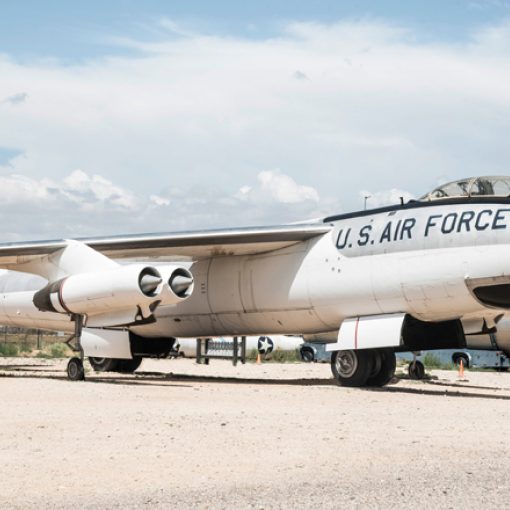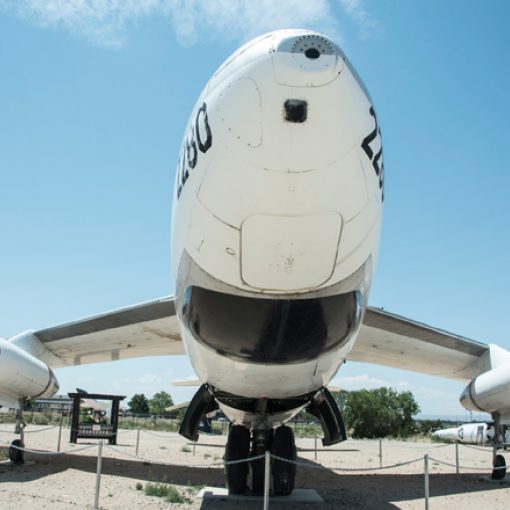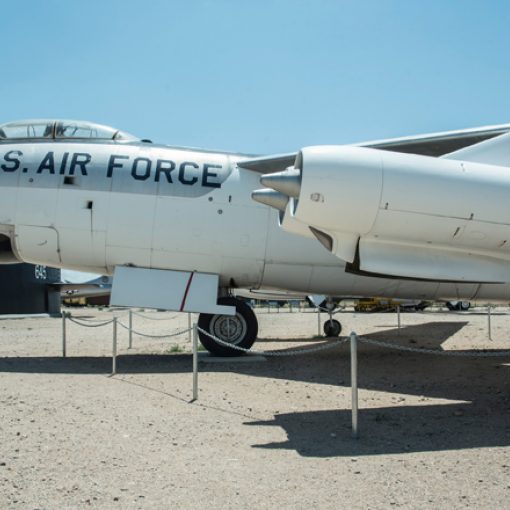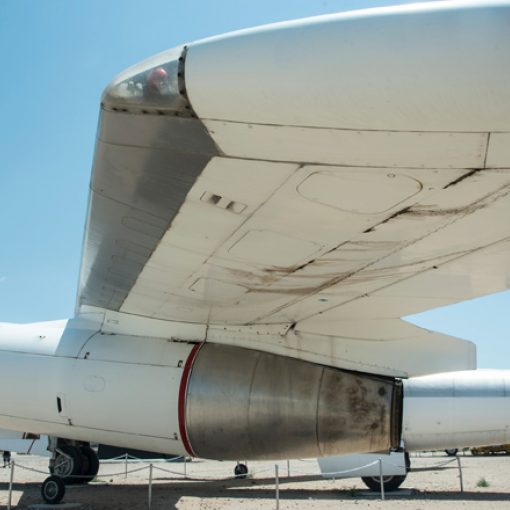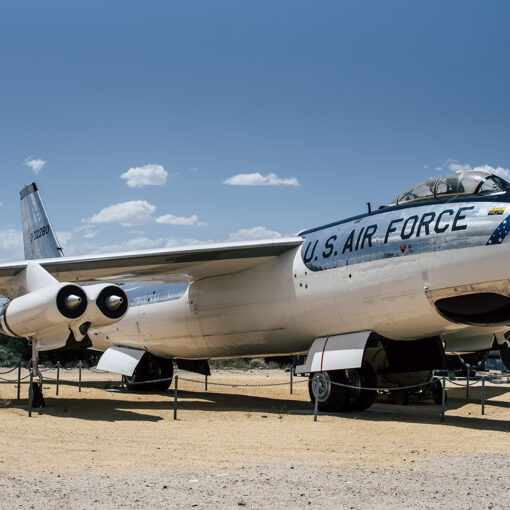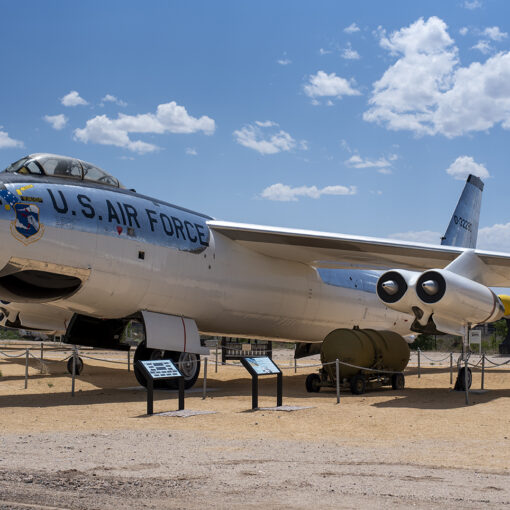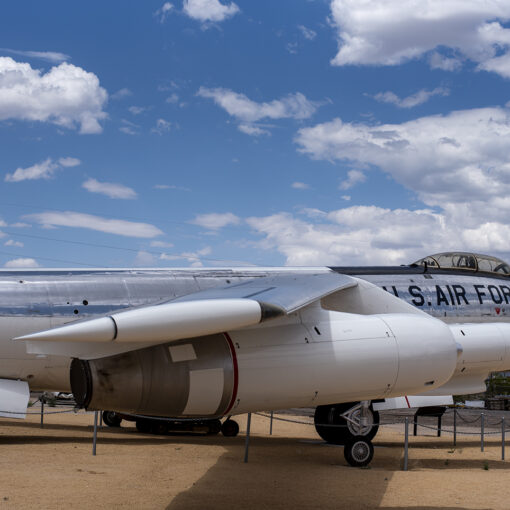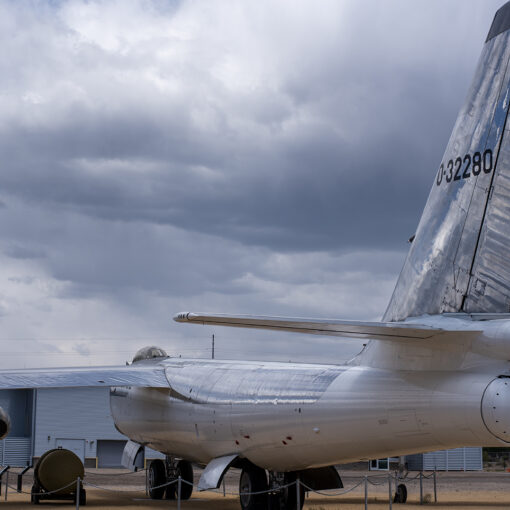Completed B-47E Stratojet
New Mexico’s only Boeing B-47E Stratojet, serial number 53-2280, one
of only 23 surviving B-47 airplanes in existence, was the focus of a
special initiative within “Operation Preservation” – a multi-year
campaign to repaint and refurbish the iconic aircraft in the National
Museum of Nuclear Science & History’s nine-acre outdoor exhibit
area, Heritage Park.
The B-47 Stratojet, with a wing span of 116 feet, was a long-range, six-engine, jet-powered strategic bomber designed to fly at high subsonic speeds and at high altitudes to avoid enemy interception. The B-47's mission was primarily to deliver nuclear ordnance on designated targets. With its engines carried in pods under the swept wing, the B-47 was a major innovation in post-World War II combat jet design and helped lead to modern jet airliners.
“The B-47 never saw combat as a bomber, but it was a mainstay of the United States Air Force’s Strategic Air Command’s (SAC) strength during the 1950s and early 1960s, and it remained in use as a bomber until 1965,” said Jim Walther, Museum Director. “It was also adapted to a number of other missions, including photo reconnaissance, electronic intelligence and weather reconnaissance, remaining in service as a reconnaissance platform until 1969 and as a test bed until 1977.”
The
B-47E – the type of aircraft located at the National Museum of Nuclear
Science & History - was an improved version of the B model and more
than 1,500 were produced by Boeing, Douglas and Lockheed. Improvements
incorporated into the E model Stratojet included a more powerful version
of the General Electric J47 turbojet and Rocket Assisted Take Off packs
with 18 or 33 rockets that were jettisoned after use. Other features of
the B-47E included 20mm cannons in the tail instead of the .50-cal.
machine guns of the B model and upgraded avionics.
The National Museum of Nuclear Science & History’s B-47E Stratojet – on permanent loan from the National Museum of the United States Air Force (USAF) - came out of the Boeing, Wichita, Kansas plant on March 1st 1955. The aircraft served most of its operational life as a test bed for modern “fly-by-wire” (FBW) systems. This system replaced conventional manual flight controls of an aircraft with an electronic interface. The B-47E was removed from inventory at Wright Patterson AFB in Dayton, Ohio, in 1969 and was transferred to the USAF Heritage Museum program where it stayed until 2003. It was then moved into storage outside the museum’s restoration hangars until it was moved from Dayton, Ohio, to the National Museum of Nuclear Science & History in August of 2013.
Restoration
of the B-47E Stratojet was scheduled to begin in April of 2018 under the
supervision of Brigadier General (Ret.) Jay Bledsoe, Restoration
Project Manager, with help from Museum staff and volunteers and will be
funded by a multi-program effort to engage supporters and entities with
personal ties to the Museum and the historic aircraft. Restoration included the B-47E receiving bodywork and a new coat of primer and paint.
The total B-47E restoration cost was approximately
$110,000. Completion of this outdoor exhibit for visitor viewing took place in the fall of 2018.
